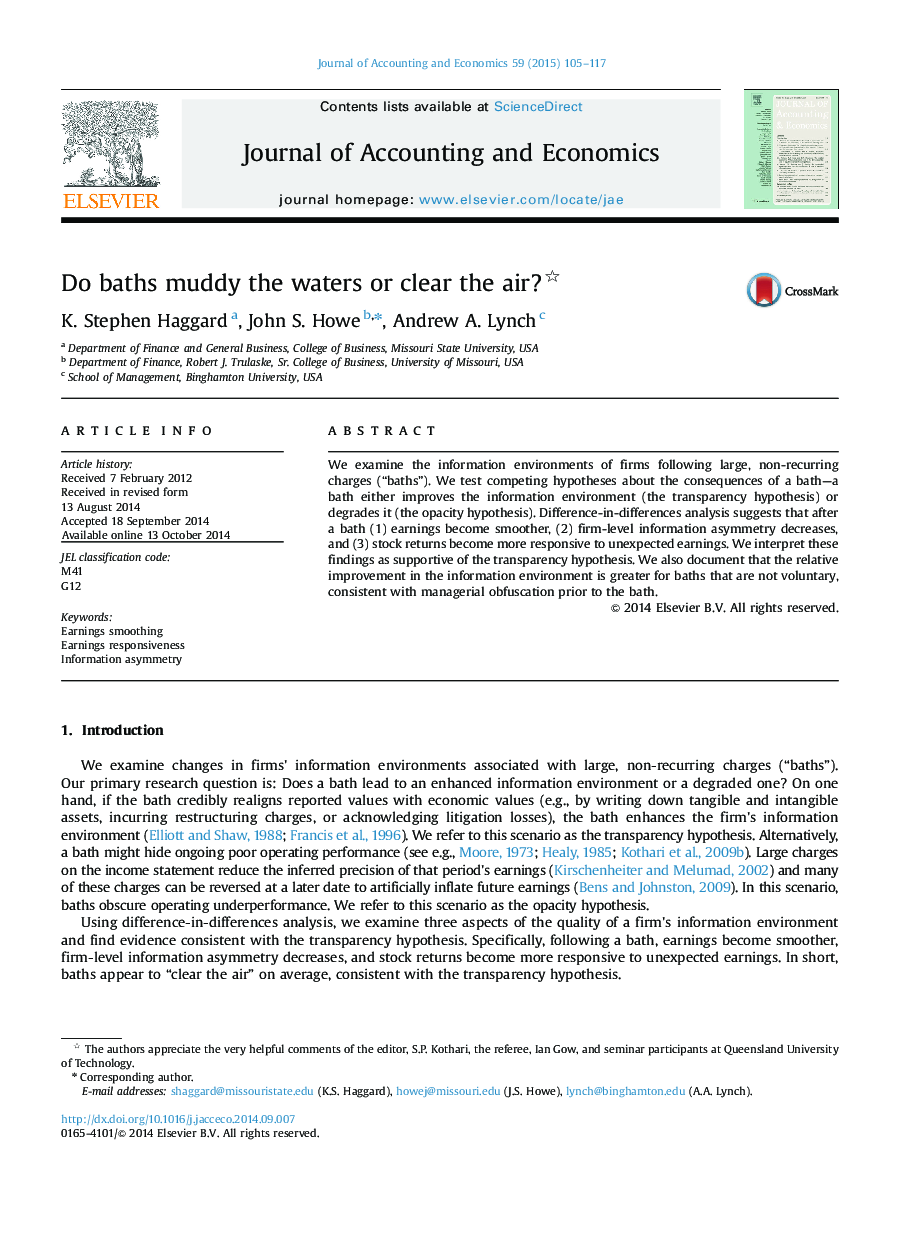| Article ID | Journal | Published Year | Pages | File Type |
|---|---|---|---|---|
| 5086712 | Journal of Accounting and Economics | 2015 | 13 Pages |
Abstract
We examine the information environments of firms following large, non-recurring charges (“baths”). We test competing hypotheses about the consequences of a bath-a bath either improves the information environment (the transparency hypothesis) or degrades it (the opacity hypothesis). Difference-in-differences analysis suggests that after a bath (1) earnings become smoother, (2) firm-level information asymmetry decreases, and (3) stock returns become more responsive to unexpected earnings. We interpret these findings as supportive of the transparency hypothesis. We also document that the relative improvement in the information environment is greater for baths that are not voluntary, consistent with managerial obfuscation prior to the bath.
Related Topics
Social Sciences and Humanities
Business, Management and Accounting
Accounting
Authors
K. Stephen Haggard, John S. Howe, Andrew A. Lynch,
